
Why is SEO important? The leading traffic source for websites is organic search.
Clearly, understanding SEO basics is more important than ever.
If you don’t have a good grasp of SEO, don’t worry: in this post, I’ll get you up to speed on all the SEO essentials, from keywords to user experience to link-building.
Key Takeaways
- The SEO essentials don’t require a lot of technical expertise.
- Keywords are crucial. Understanding your audience and their pain points, identifying terms and phrases that are related to your business, and researching the keywords your competitors are using can all point you toward your target keywords.
- User experience also affects SEO. How your website is organized, how quickly pages load, and how it appears on mobile devices are very important.
- Links to and from websites with high authority help boost your SEO rankings.
What Is SEO?
To master SEO basics, you first need to understand what SEO is.
SEO stands for “search engine optimization.” This refers to the process of improving the performance, experience, and authority of your website so that it ranks higher in search engine results.
This means that when users search for something related to a product or service that you offer on Google or Bing, your website pops up as one of the results within the first page. It brings in traffic organically, as opposed to traffic that results from ads or paid search.
Why Is SEO Important?
Over 85 billion people visit Google every month. Those are a lot of potential customers!
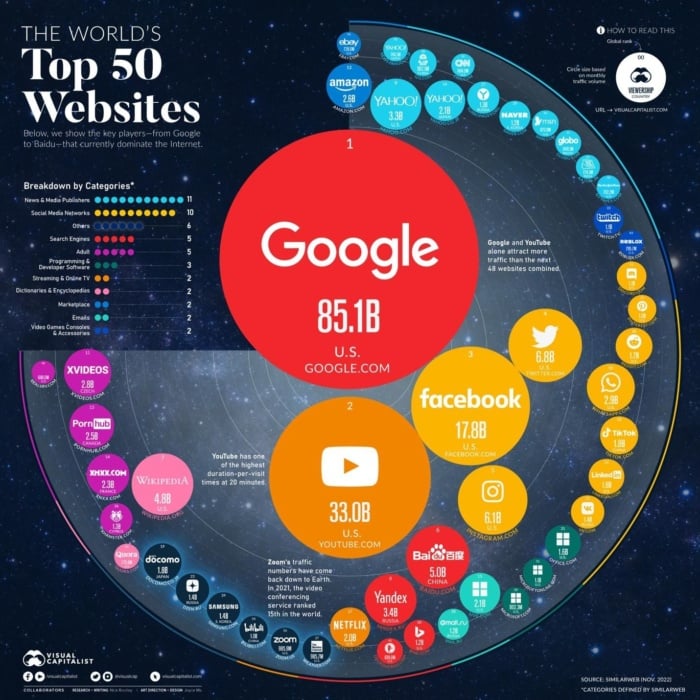
But with new websites being built every second, it’s also a highly competitive pool. How can you make sure yours stands out?
That’s why mastering SEO is so important. SEO helps enhance the visibility of your website to people searching online.
And unlike ads or social media posts, SEO can pay off again and again over time—making the investment in learning SEO fundamentals something that will pay off big later.
Setting Yourself Up for SEO Success
Before you dive into the nitty-gritty of SEO essentials, it’s critical to have some elements in place to support it.
Your domain name is a critical aspect of SEO success. Something straightforward that is related to your business will get more traffic.
Pay attention to the extension—a .com domain has long been considered the gold standard, but .net and .co are also good options.
Your hosting platform is another important aspect of SEO. Make sure you choose a platform that offers speedy page loading and robust security. Faster loading speeds can help your site rank higher and support a better user experience.
Finally, a logical site structure helps search engines find and index all your site’s pages. It also ensures that visitors can quickly find the content they are searching for.
There are several factors influencing SEO, ranging from content to your website structure to backlinks. Each has the potential to improve your SEO and bring more visitors to your website. Here’s an overview of what they are and how to optimize them.
#1: Keyword Research
Keyword research is the process of identifying the specific words and phrases that people use when looking for information on search engines. It helps businesses understand what potential customers are searching for online, improves online visibility, and uncovers new ranking opportunities.
Keyword research can reveal valuable insights such as:
- How many people are searching for a specific keyword or phrase
- How relevant a keyword or phrase is for your target audience and your content
- How difficult it is to rank for specific keywords based on competition with other websites
- Long-tail keywords that can provide further insights into your audience’s pain points and that you can use to develop content topics
Ahrefs analyzed how many SEO keywords a page should target for optimal SEO results.
Here’s a summary of what it discovered:
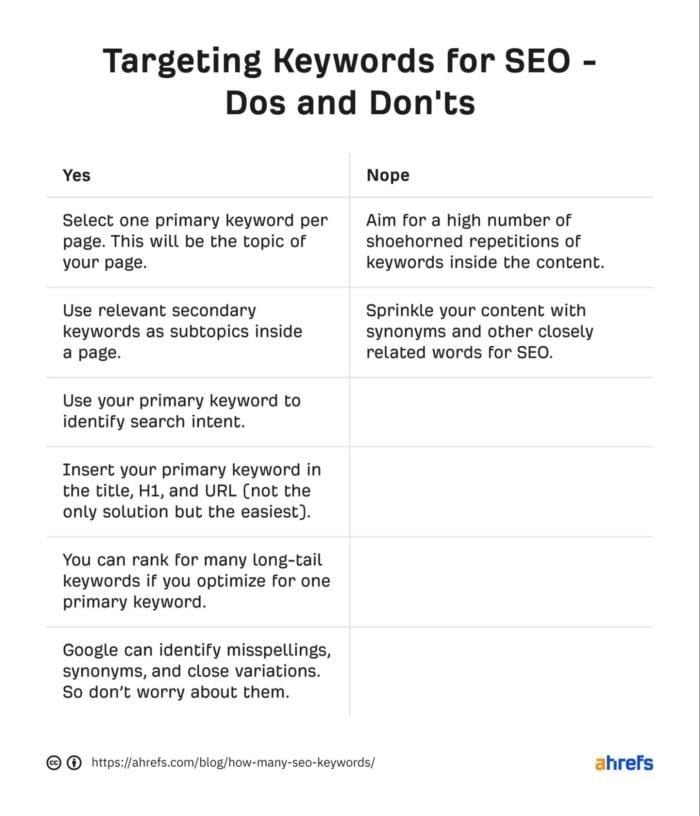
Simple, huh?
To effectively use keyword research, follow these steps:
- Brainstorm relevant topics for your business/website
- Use a keyword tool like Ubersuggest, Google Keyword Planner, Ahrefs, or Semrush
- Use the keywords in your content
- Monitor and adjust your strategy regularly
For example, a vegan restaurant could use keywords like “vegan restaurant near me” and “best vegan burgers” in its website copy and blog posts to improve its online visibility.
Quick Tips for Keyword Research
- Understand Your Audience
Explore what keywords and phrases potential customers are typing into search engines when looking for your product or service. Use a website analytics tool to get information on current visitors to your website and what keywords they used to get there.
- Brainstorm Seed Keywords
Come up with a list of basic terms or phrases that are relevant to your business and industry. You can use these as the jumping-off point for your research.
- Target Long-Tail Keywords
Long-tail keywords are longer, more specific phrases that people often use when they’re closer to making a buying decision. They tend to have less competition and higher conversion rates.
- Analyze Competitor Keywords
Look at keywords your competitors are using to study their strategy as well as identify any gaps and opportunities you can leverage.
- Explore Related Keywords
Identifying other terms and phrases that are closely related to your primary keywords or topics can help you avoid keyword cannibalization.
- Consider Search Intent
The term “search intent” basically means what ideal buyers are looking for online. There are four types of search intent: informational, navigational, transactional, and commercial.
#2: Create Content
Content is another ranking factor that’s way up there at the top of the list of SEO essentials. It’s just chillin’ with its pal backlinks, and it’s not going anywhere.
Need proof? Here’s what my colleague Matthew Santos, SVP of Product and Services, SEO, at NP Accel says:
“Over the past 20 years, we have seen so many new features come out from Google that have caused SEOs to adopt new tactics, but one constant we have never seen Google move away from is the importance of high-quality content. As we have continued to double-down on high-quality content, we have seen thousands of customers over the last five years survive every single one of the major core algorithm updates.”
If you neglect your site’s content, you’re doing yourself a huge disservice. Creating regular, optimized content is one of the easiest ways to get organic traffic to your website.
The reason why content is so vital to SEO is common sense, really.
Content keeps people on your site. This signals to the search engines that you’re providing relevant and useful information.
Another thing about content? It’s where your keywords go! If you want organic traffic, you can’t ignore keywords.
Don’t know where to start? You can use a tool like Ubersuggest to find keyword suggestions and top-ranked content to help guide your content creation.
Quick Tips for Content Creation
- Brainstorm Content Ideas Based on Audience Needs
Use your target keywords to come up with topics for content. For example, if you run a plumbing business, “how do I fix a sink” could suggest a blog post on why it’s better to hire a plumber to fix it instead of DIY-ing it.
- Write Clearly and Concisely
Make sure your content provides useful information and avoids “fluff.” Use headings, bullet points, and formatting to improve readability and make content skimmable.
- Incorporate Relevant SEO Keywords
It may seem obvious, but make sure that you include your target keywords to optimize content for SEO.
- End with a Call to Action
Make it easy for your audience to respond by providing a link to a page where they can register for a demo, request more information, or purchase your product or service.
- Try Different Types of Content
Infographics, blog posts, and case studies are different formats you can use to inform, educate, and even entertain. See which ones resonate best with your audience.
- Repurpose and Refresh Old Content
Repurposing your old content is one of the best ways to get the most value from it. For example, long-form content could become an eBook or a series in a newsletter.
#3: Optimize Your Meta Descriptions and Title Tags
Often overlooked or underestimated, well-written title tags and meta descriptions are basics of SEO that can improve your website’s search engine rankings, drive more traffic, and achieve your marketing goals.
Meta descriptions and title tags tell search engines what your site is about. Optimizing them can improve your website’s search engine rankings, drive more traffic, and achieve your marketing goals.
Think of meta descriptions as a quick sales pitch: they’re a chance to attract and engage your audience right off the bat, guiding them from the search engine results pages (SERPs) to your site.
For example, here are the results for “best online bicycle store”:
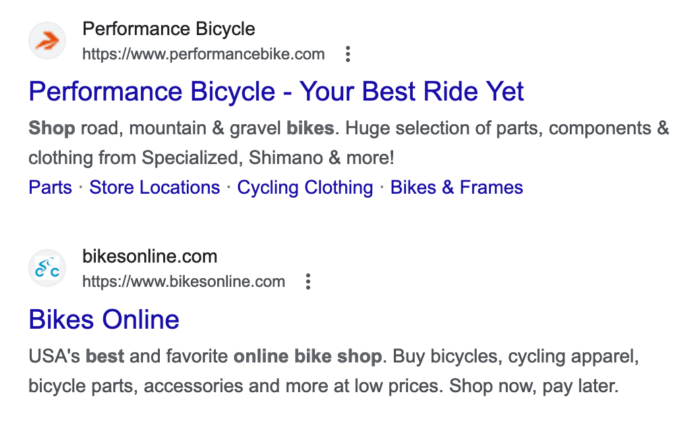
Title tags perform a similar function by serving as a signpost for what visitors can expect to read. They should ignite curiosity and encourage your audience to dive deeper into your content.
In short, writing effective meta descriptions and title tags that include keywords is one of those SEO essentials that can increase your click-through rates (CTR), improve your rankings, and reduce your bounce rate.
Quick Tips for Crafting Meta Descriptions and Title Tags
1. Place Keywords Close to the Beginning
Search engines want to display the most relevant content. When you put your keywords at the start of your sentence, Google gets your signal loud and clear.
2. Keep Them Focused and Concise
Aim for no more than 150-160 characters while conveying the main benefit or unique selling proposition.
3. Include Relevant Keywords
Just like using keywords in the body of your content, keywords in title tags and meta descriptions will enhance your content’s visibility.
4. Use Action-Oriented Language
Words like “Now” and “Today” convey a sense of urgency, while action verbs like “Discover” and “Accelerate” can pique readers’ attention.
5. Test Variations
Try using different keywords and sentence constructions to see which ones are most effective.
#4: Focus on User Experience (UX)
If you’ve limited technical experience, how do you improve your site for SEO? You focus on user experience (UX).
Simply put, UX means working with the user in mind.
Many people ignore this aspect of mastering SEO—but that’s a big mistake.
The design of your website may be the Sistine Chapel of websites. But let’s be honest…
A user is coming to your site to find a product or information. They don’t care about your cutting-edge design. They just want to find what they’re looking for, fast.
Financesonline proved this.
They found that what consumers value the most about web design is website performance:

A positive user experience encourages visitors to stay on your website longer, reducing bounce rates. It can also encourage them to explore multiple pages.
Engaged visitors are also more likely to interact with your content by signing up for a newsletter, downloading a tip sheet or guide, or leaving a comment on your blog. These actions show search engines that your website is useful and relevant.
Quick Tips for Improving UX
1. Increase Site Speed
Page speed is one of the most important ranking factors. Deleting plugins, compressing images, and reducing third-party popups and widgets can help pages load more quickly.
2. Simplify Navigation
Make sure your website’s main menu is simple, logical, and easy to understand. Avoid overwhelming visitors with too many options—use sub-menus or drop-down menus to organize additional pages.
3. Reduce Clutter
Use a visual hierarchy to guide visitors. Too many ads and pop-ups are distracting, particularly on mobile.
4. Provide Clear Calls to Action
Don’t make visitors search a page or, worse, your entire site trying to figure out how to schedule an appointment or view a demo. Chances are they’ll give up very quickly.
#5: Prioritize Mobile Experience
Mobile SEO is more important than ever.
Google has also adopted a mobile-first approach to indexing, and with good reason.
With over 56 percent of online searches from mobile these days, catering to mobile users is now more critical than ever if you want your content to rank in the SERPs.
How do you optimize for mobile? It doesn’t take a lot of SEO experience to do it.
You can use Google’s Lighthouse tool for Chrome.
All you need to do is copy and paste your URL. It takes seconds to come up with the results.
It will give you a report like this:
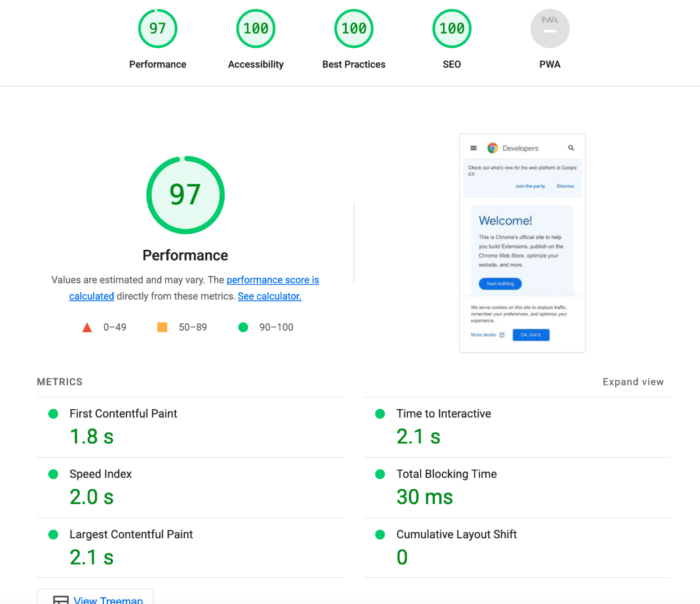
Lighthouse can tell you where some errors are. For example, it might tell you that images take too long to load.
To fix those errors, create a responsive website.
That means your website is designed and coded so that it automatically adjusts the layout, content, and functionality based on the device it’s being viewed on, such as a phone or notebook.
When your website is responsive, search engines can crawl and index your content more efficiently.
Quick Tips for Improving Mobile Experience
- Design for Touch Interaction
Larger buttons and clickable elements make it easier to navigate your site on a small screen.
- Keep Content Concise and Scannable
This is a good SEO practice in general, but even more important when users are reading on phones and notebooks.
- Streamline Forms and Checkout Processes
Minimize and simplify fields to make them easy to fill out on a mobile device.
- Optimize for Local SEO
Using local keywords and phrases helps your business show up in local search results. Plus, mobile-specific services such as click-to-call can prompt users to take action.
- Optimize for Voice Search
Today, 27 percent of mobile queries use voice search. Think about how people use language when using voice search and incorporate relevant keywords.
#6: Build Links
Google loves links, and so should you.
They’re like that old friend who has stuck with you through thick and thin. They’re so reliable. You really can’t forget about them.
Why are links so important?
Backlinks from high-authority sites send a trust signal to Google. It’s like having somebody vouch for you. The more people that vouch for you, the more trustworthy you are.
For example, here’s the backlinks report for my own site:

Links can also drive organic traffic and grow brand awareness by getting more people to visit your site.
Finally, while search engine algorithms may change, links are forever (sort of). By focusing on acquiring high-quality, relevant backlinks, you can future-proof your SEO efforts.
Quick Tips for Building Links
1. Create High-Quality, Valuable Content
This is one of the most natural ways to get people to link back to your site. If it’s something that makes others in your industry go, “Wow!” they won’t be able to help themselves.
2. Contribute Guest Posts or Articles
Reach out to prominent websites or blogs in your industry and offer to write guest posts or articles. This is a great way to build authority and credibility in your niche.
3. Link to Relevant Content to Encourage Others to Link to You
Linking out to relevant content can seem scary, but I always do it in my blog posts. If you don’t link to relevant content, you can’t expect people to want to link to you.
4. Ask for Links
You can’t always expect people to link to your content without asking. After you’ve created some quality content, do some basic outreach. Not sure how to start? Find out the optimal times to send emails. You can also use an AI tool like ChatGPT to help you figure out what to say.
5. Collaborate With Other Businesses
Working with other organizations on projects, events, or publications offers an opportunity to generate links back to your website.
6. Submit Your Website to Relevant Directories
Industry and professional associations often have online directories and listings for businesses and members. This is an easy way to get a link from a site with high authority.
#7: Measure Your Results
The ultimate goal of implementing SEO essentials is to drive more organic traffic to your website. By monitoring your SEO strategy’s performance over time, you can make data-driven decisions to improve it and boost your website’s rankings in search engines.
Analyzing results can also help you identify additional opportunities for SEO optimization, such as replicating high-performing content or pinpointing any technical issues that are hurting your website’s SEO rankings or performance.
Regularly tracking and analyzing your SEO results can help you adjust your strategy to ensure you’re targeting the right audience, using the most effective keywords, and providing relevant content, ultimately leading to higher organic traffic and better business outcomes.
Finally, measuring SEO performance helps quantify and demonstrate its value to company stakeholders.
After all, in business, it’s all about the numbers.
Quick Tips for Measuring Results
1. Define Clear Key Performance Indicators (KPIs)
What should you focus on with KPIs? After all, there are plenty to choose from. Semrush suggests you focus on these.
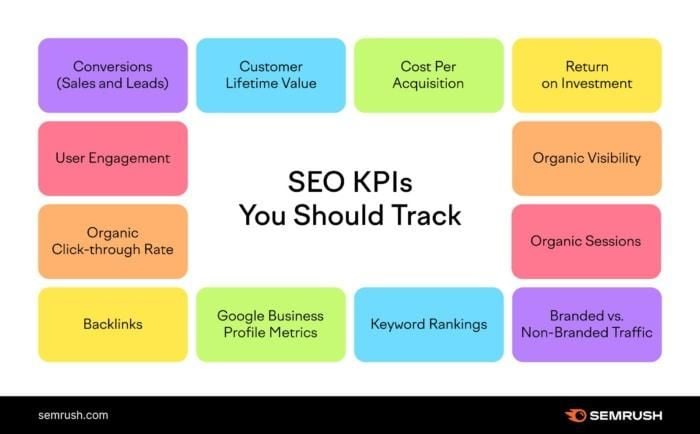
2. Use Web Analytics
Take advantage of tools like Google Analytics to track website traffic, user behavior, and conversions.
2. Create a Regular Tracking Cadence
Tracking your progress and monitoring your KPIs and metrics regularly is crucial. By doing so, you can identify changes in performance, spot issues or threats, and uncover new opportunities to optimize your strategy.
3. Benchmark Your Performance
Compare your results to industry standards and competitors to see if your website is performing at the same level.
4. Conduct A/B Testing
Compare different variations of your content, website structure, and keywords to see which performs better.
5. Act on Your Results
Tracking your KPIs is one thing. However, there’s no point to it if you don’t take steps to resolve or improve any issues.
6. Continuously Optimize Your Strategies
Applying the tips you’ve learned and monitoring the results is the best way to see if the techniques work for you. You could also work with an SEO mentor or an agency to further build your skills and refine your techniques.
FAQs
Some key SEO basics include keyword research, on-page optimization, link building, and content creation.
On-page SEO focuses on optimizing individual pages on your website to make them more search-engine friendly,
Link building involves developing relationships with other websites to increase the number and quality of backlinks pointing to your site.
Finally, content creation involves creating high-quality, original content that is useful, informative, and engaging for your target audience. You’ll also want to include relevant keywords and phrases to boost your content’s visibility and relevance to search engines.
You don’t need much experience to master many of the SEO basics. For example, you can use keyword research tools to find keywords. Once you’ve done that, you can include the keywords naturally into your content, headings, and meta descriptions.
Link building may seem more complex, but you can start by building links through social media sharing. Aside from that, you can use blog commenting and forums if sharing links is acceptable.
There are three main types of SEO:
On-page SEO. This focuses on optimizing web pages to improve their search engine rankings and attract organic traffic. Tactics include creating high-quality and relevant content, incorporating keywords and keyword phrases throughout the content, improving website structure and navigation, and ensuring a positive user experience.
Off-page SEO. These efforts focus on improving the authority, credibility, and relevance of a website for search engines. Tactics include building a linking strategy with respected and relevant websites.
Technical SEO: This type involves optimizing things like website speed and performance, URL structure, fixing broken links, and incorporating mobile-friendly and responsive design. The goal is to make it easy and efficient for search engines to crawl and index your site content.
Conclusion
Yes, SEO is often like trying to hit a moving target.
However, developing your skills after you learn SEO basics helps you make several hits.
A key takeaway from this article is that there are proactive methods you can use to improve SEO, even if you have no or limited technical skills.
Go after the important metrics, such as links or content, with simple methods and tricks.
Think of your audience and the search engines when working on your site.
Finally, remember to optimize for mobile.
That’s SEO 101. With enough practice, anyone can do these things—and reap the rewards.

